9 Healthiest Breads To Eat as Recommended by a Nutritionist in 2025
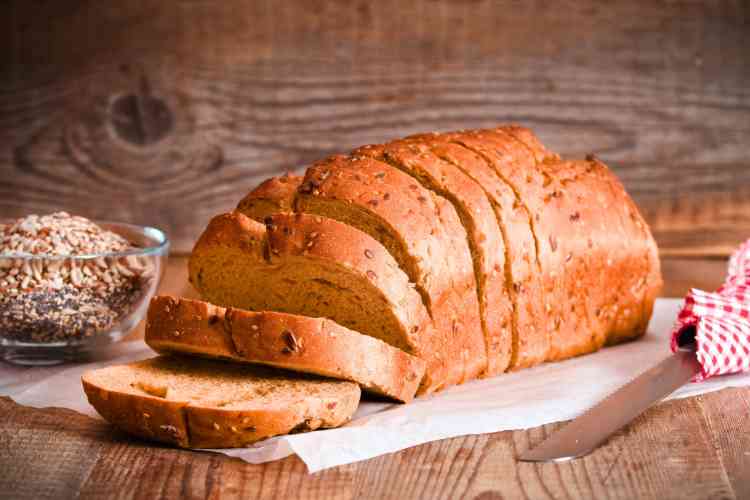
If you had to pick one bread to eat as part of a better diet, what is the healthiest bread? Or are there a few healthy options you could incorporate into your diet? Here’s how to choose the healthiest bread for your goals.
Bread is a staple in our lives — from our morning toast to our lunchtime sandwich to those irresistible artisanal breads that restaurants tempt us with. For many people, bread is a true comfort food.
However, not all breads are created equal and some options are healthier than others, such as wholegrain varieties. In fact, adding wholegrain bread can support a healthy eating pattern.
As the Mayo Clinic explains, adding whole grains to your diet provides fiber, minerals and other nutrients. They may help manage blood pressure, cholesterol and weight. Wholegrain foods are linked with a lower risk of heart disease and type 2 diabetes as part of an overall eating pattern. Switching from white bread to wholegrain bread is a good jumping-off point when discovering how to start eating healthy.
To help you discover the best varieties to enjoy while still eating well, we've put together a guide to the healthiest bread types. From seeded loaves to trendy sourdough and even gluten-free options, there are healthier choices for different preferences and needs.
Jump to Section
- How We Choose the Healthiest Bread
- The 9 Healthiest Types of Bread To Eat
- What Is the Healthiest Bread To Eat?
How We Choose the Healthiest Bread
The team at Cozymeal is passionate about connecting our audience with one-of-a-kind culinary experiences and valuable guides across a range of food topics, including nutrition-based content.
With this in mind, we set out to create a guide to the healthiest types of bread that’s well-researched, factually accurate and provides all the information you could need when trying to make healthy eating decisions.
To do this, we turned to our current wealth of knowledge around healthy eating and undertook thorough research to finalize our list, even consulting with Registered Nutritionist, Jessica O'Shea, to ensure our picks of the healthiest bread are the most nutritionally optimal.
We also ensure each healthy bread meets the following set of criteria.
Our guide to the healthiest types of bread includes options that:
- Favor whole grains listed first, including 100% wholegrain and sprouted loaves
- Aim for at least 3 grams of fiber per slice
- Keep sodium modest, ideally 140 milligrams or less per slice
- Limit added sugars to 2 grams or less per slice
- Prefer simple ingredient lists with no artificial sweeteners or partially hydrogenated oils
- Highlight nutritious add-ins like seeds or oats when they fit the style
Ultimately, this healthy bread guide should help you understand what to look for in a healthy bread and what to avoid, along with the health benefits of different types of bread and how to incorporate them effectively into your diet.
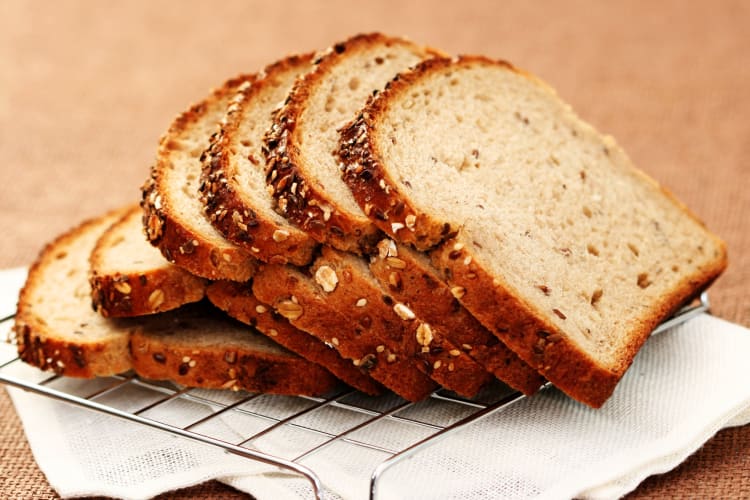
The 9 Healthiest Types of Bread To Eat
1. Sprouted Wholegrain Bread
Sprouted wholegrain bread is often considered one of the healthiest bread options due to its high nutrient content and easy digestibility. Just as when your vegetable seedlings sprout, a grain will sprout when exposed to heat and moisture. Sprouting can increase the bioavailability of some nutrients, though final amounts vary after baking.
As outlined in an article by Harvard Health Publishing, sprouted grains have more available nutrients than mature grains. These nutrients include folate, iron, zinc, magnesium and protein. Therefore, compared to bread made from white or processed flour, sprouted grain products are the healthiest types of bread as they often provide more fiber and some micronutrients than refined-flour breads.
Sprouted grain bread can provide vitamin E and carotenoids, but amounts per slice are modest and depend on the recipe. Wholegrain sprouted bread is additionally considered one of the healthiest breads because it makes you feel full longer, which helps keep portion sizes down.
One drawback of sprouted grain bread is that it often has fewer preservatives and a shorter shelf life compared to conventional bread. That means you’ll have to plan ahead if you want to make a sandwich with this healthy type of bread, or look into answering the question: "Can you freeze bread?" to extend the shelf life of sprouted wholegrain bread.
Sprouted Wholegrain Bread Product Pick: Ezekiel 4:9 Sprouted Grain Bread
Ezekiel 4:9 Sprouted Grain Bread Nutritional Overview (per 34-gram slice):
- Calories: 80
- Total Fat: 0.5 grams
- Saturated Fat: 0 grams
- Sodium: 75 milligrams
- Total Carbs: 15 grams
- Fiber: 3 grams
- Total Sugar: 0 grams
- Added Sugar: 0 grams
- Protein: 5 grams
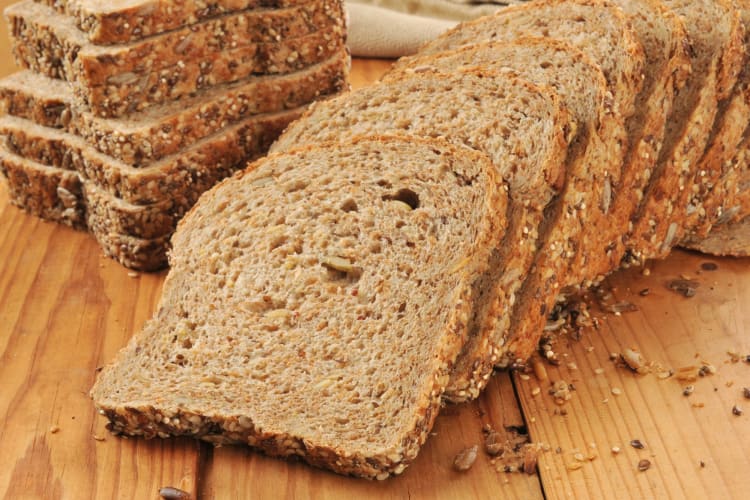
2. Wholegrain or Wholewheat Bread
Wholegrain bread, in general, is the healthiest bread to eat. It isn’t low-carb bread, but it’s a higher-fiber, more nutrient-dense choice than white bread. Sprouted wholegrain, discussed above, is one type of wholegrain bread, but not all wholegrain breads are sprouted. Look for the word ‘sprouted’ on the label if that’s what you are looking for.
The term “wholegrain” refers to bread made using the entire kernel of grain, which includes the parts containing valuable fiber and nutrients. These parts are also what give wholegrain bread its darker color. The process of making white bread strips these components away, resulting in a less nutritious product.
Wholegrain bread provides mostly insoluble fiber with some soluble fiber, which supports digestion and helps you feel full. Other benefits of this healthy bread include the fact that the nutrient-rich wholewheat flour used may help to protect against certain types of cancer, stroke and type 2 diabetes. For example, a study published by the National Library of Medicine states that consumption of whole grains combined with a generally healthy lifestyle results in improved cardiovascular disease outcomes.
In general, regular wholegrain bread doesn’t require refrigeration or freezing and has a longer shelf life than sprouted wholegrain bread. This makes wholegrain bread a more convenient product than sprouted wholegrain for those who can't get to the grocery store or bakery every few days.
Wholewheat Bread Product Pick: Nature's Own 100% Wholewheat Bread
Nature's Own 100% Wholewheat Bread (per 26-gram slice):
- Calories: 70
- Total Fat: 0.5 grams
- Saturated Fat: 0 grams
- Sodium: 110 milligrams
- Total Carbs: 11 grams
- Fiber: 2 grams
- Total Sugar: 1 gram
- Added Sugar: 1 gram
- Protein: 4 grams
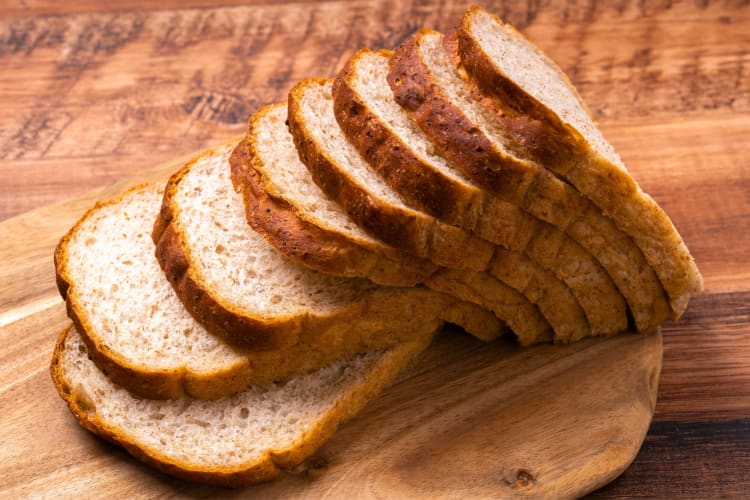
3. Sourdough Bread
While sourdough is one of the most popular kinds of bread, is it one of the healthiest types of bread? For many, the question remains: Is sourdough bread healthy overall?
To answer this, we need to look at the production process. Sourdough is made through a process of fermenting yeast to give the bread its rise. As the Sustainable Food Trust notes, sourdough fermentation may lower glycemic response in some breads. However, it's important to note that sourdough still contains gluten and it is not suitable for those with celiac disease.
Although any type of sourdough is generally better for you than standard white bread, if you want to choose the healthiest type of bread to eat, grab wholegrain sourdough versus the white variety. Yet, white sourdough is generally the healthiest white bread if you really don't want to give up this type of bread in place of a wholegrain variety.
Compared to other breads on this list of the healthiest bread, is that sourdough is often sold as a whole loaf and sliced at home rather than pre-sliced. This may lead to the average slice of sourdough bread being larger than other varieties, packaged sandwich slices often weigh 28 to 45 grams, while bakery sourdough slices can weigh 60 to 70 grams.
Sourdough can be higher in sodium than other bread varieties. Check the label and manage sodium by choosing a thin-sliced loaf or by slicing smaller portions at home.
Sourdough Bread Product Pick: Trader Joe's Sourdough Sandwich Bread
Trader Joe's Sourdough Sandwich Bread Nutritional Overview (per 43-gram slice):
- Calories: 100
- Total Fat: 0 grams
- Saturated Fat: 0 grams
- Sodium: 190 milligrams
- Total Carbs: 20 grams
- Fiber: 1 gram
- Total Sugar: 0 grams
- Added Sugar: 0 grams
- Protein: 4 grams
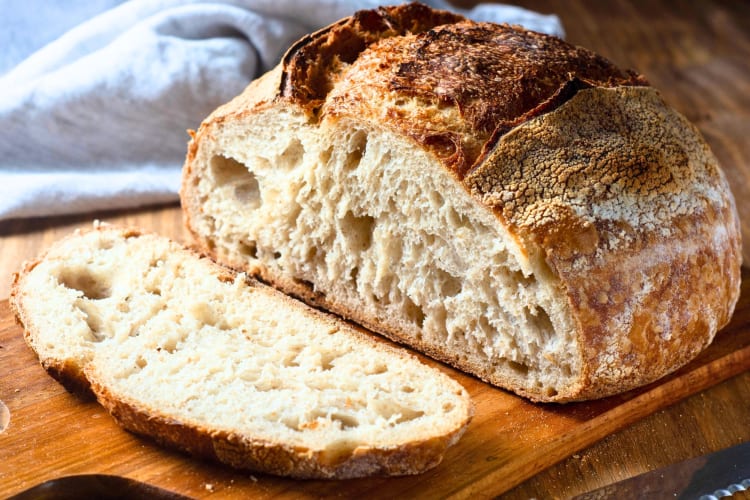
4. Seeded Bread
Seeded varieties of bread are generally one of the healthiest types of bread as the seeds add extra nutrients. Seeds like chia, pumpkin, sunflower and flax make healthy snacks and are nutrient-dense, so they automatically kick the health factor up a notch when added to bread.
Plus, according to the Cleveland Clinic, these seeds (along with hemp seeds and sesame seeds) are some of the healthiest seeds you can add to your diet, so if you don't want to eat them as they come, buying a healthy bread that includes the likes of pumpkin seeds is an excellent way to incorporate these nutrient-dense foods into your diet. Seeds add fiber, unsaturated fats and protein plus minerals like iron, calcium, phosphorus and magnesium, and they bring flavor and crunch.
Many of the healthiest bagel brands now sell seeded versions as well, allowing you to mix up the type of seeded bread you eat and offering a great solution for breakfast if you don't want standard toast. You could even make your own at home, including variations like gluten-free bread with seeds of your choice or a sweet vegan pumpkin bread with ground flax and a pumpkin seed topping.
Seeded Bread Product Pick: Dave's Killer Bread Powerseed Thin-Sliced Bread
Dave's Killer Bread Powerseed Thin-Sliced Bread Nutritional Overview (per 28-gram slice):
- Calories: 60
- Total Fat: 1.5 grams
- Saturated Fat: 0 grams
- Sodium: 90 milligrams
- Total Carbs: 12 grams
- Fiber: 3 grams
- Total Sugar: 2 grams
- Added Sugar: 2 grams
- Protein: 4 grams
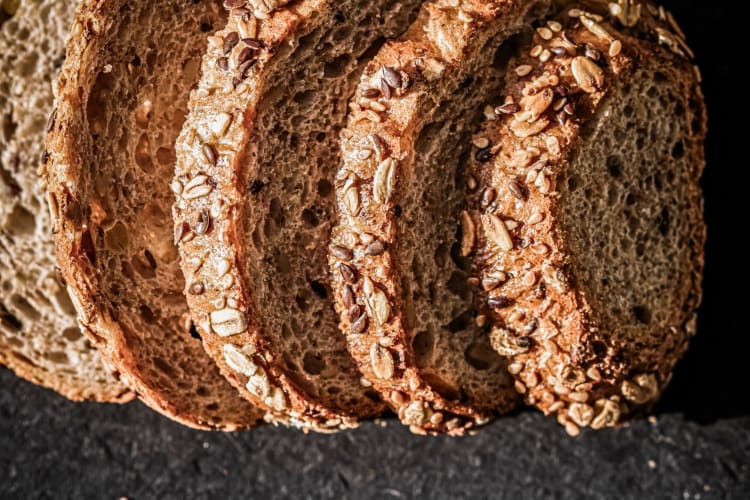
5. Rye Bread
Rye bread is made specifically from rye. This is a cereal grain distinct from wheat used in sprouted or wholegrain bread, giving it a slightly different nutritional profile and a unique tangy flavor. Many rye loaves are wheat-rye blends, so for more fiber, choose products that list wholegrain rye first and be cautious with “light rye,” which is often mostly refined wheat flour.
As highlighted by sources like Glycemic Index Research and GI News at the University of Sydney, rye bread also tends to have a lower glycemic index than whole wheat or other types of bread. This can make it a helpful option for some people managing blood sugar, but it is not appropriate for a gluten-free diet.
Rye bread supplies minerals such as magnesium and potassium and typically provides 2 to 3 grams of fiber per slice, with about 60 to 100 calories per slice.
Rye Bread Product Pick: Oroweat Jewish Rye Bread
Oroweat Jewish Rye Bread Nutritional Overview (per 32-gram slice):
- Calories: 90
- Total Fat: 1.5 grams
- Saturated Fat: 0 grams
- Sodium: 190 milligrams
- Total Carbs: 17 grams
- Fiber: 1 gram
- Total Sugar: 1 gram
- Added Sugar: 1 gram
- Protein: 3 grams

6. Flax Bread
Flax bread is a healthy bread made with both wholegrains and flax seeds, so you get the combined health benefits of both ingredients. Flax seeds are an excellent addition to your diet as they provide ALA omega-3 fatty acids, which support heart-healthy eating patterns.
As covered by the National Library of Medicine, flax seeds (and therefore, flax bread) are also a good source of compounds called lignans, which have powerful antioxidant properties.
On top of nutritional benefits, flax bread has a nutty, earthy flavor due to the natural taste of flaxseeds, making it a unique addition to your daily meals, whether used for toast, sandwiches or any other snack.
Flax Bread Product Pick: Ezekiel 4:9 Flax Sprouted Whole Grain Bread
Ezekiel 4:9 Flax Sprouted Whole Grain Bread Nutritional Overview (per 34-gram slice):
- Calories: 80
- Total Fat: 1 gram
- Saturated Fat: 0 grams
- Sodium: 70 milligrams
- Total Carbs: 14 grams
- Fiber: 3 grams
- Total Sugar: 0 grams
- Added Sugar: 0 grams
- Protein: 5 grams
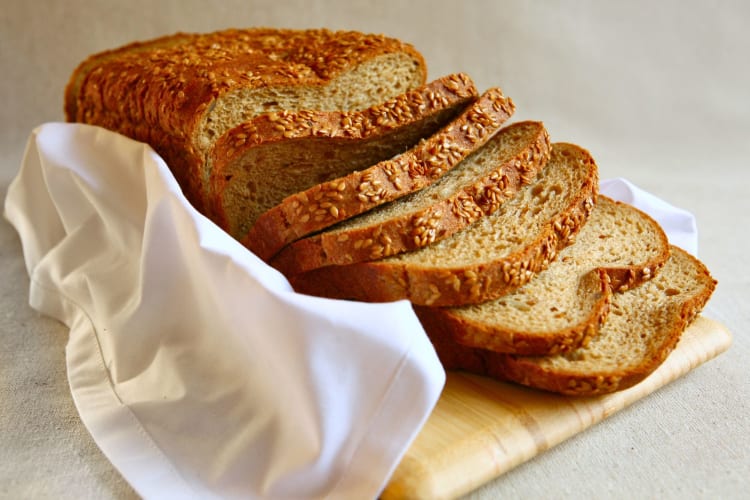
7. Oat Bread
What is the healthiest type of bread to eat if you don’t like the taste of wholegrain? Oat bread is a great choice because it's not as dense or heavy as wholegrain, it's the perfect choice when you want to move away from white bread but aren’t ready to go all the way to wholewheat.
Oat bread is made from a combination of oats, flour, yeast and water. It's one of the healthiest bread types available because oats are a good source of fiber, plus they contain magnesium, thiamine, iron and zinc.
As the Whole Grains Council notes, oats provide beta-glucan fiber that can help lower LDL cholesterol and improve satiety, and they can support healthy blood sugar and blood pressure as part of an overall eating pattern.
All of this means that oat bread can be one of the healthiest types of bread to eat, as long as you watch ingredient labels carefully. Some breads labeled “oat” contain very few actual oats and are instead made with refined flours, sugars and oils. Another drawback is that they typically contain less protein than wholegrain or rye breads.
Oat Bread Product Pick: BFree Gluten Free Oat Loaf
BFree Gluten Free Oat Loaf Nutritional Overview (per 26-gram slice):
- Calories: 75
- Total Fat: 1.3 grams
- Saturated Fat: 0 grams
- Sodium: 105 milligrams
- Total Carbs: 15 grams
- Fiber: 2 grams
- Total Sugar: 0.5 grams
- Added Sugar: 0 grams
- Protein: 1.5 grams
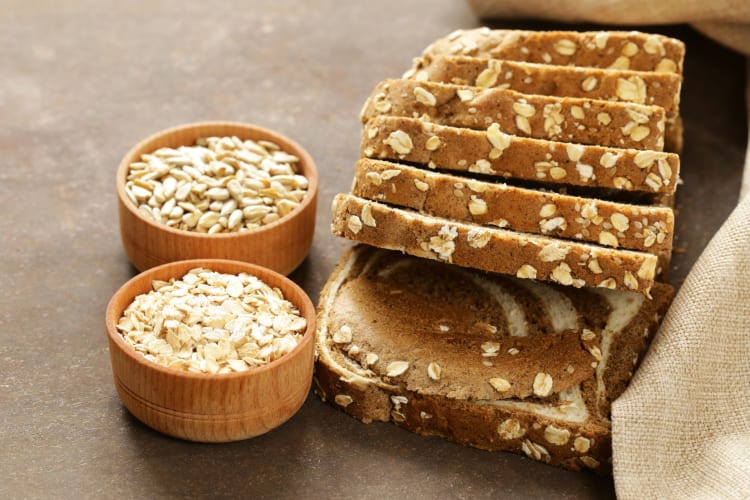
8. Gluten-Free Breads
If you have celiac disease or gluten sensitivity, it can be hard to find the right bread because most breads are made with wheat, rye or barley, which all contain gluten. Therefore, you might be wondering: “What is the healthiest type of bread to eat if you are gluten intolerant?” Luckily, you can find many gluten-free breads to enjoy.
Gluten-free breads are often made from wholegrain flours such as sorghum, buckwheat, millet or oat, sometimes blended with rice or tapioca. Many people think gluten-free bread is the healthiest bread, but that is not always the case.
Just like other kinds of bread, there are healthier and unhealthier varieties, with some gluten-free breads containing refined flour and added sugars. For gluten-free bread, look for wholegrain flours like sorghum, buckwheat, millet or oat, and check for at least 2 grams of fiber per slice with low added sugar and moderate sodium.
Gluten-Free Bread Product Pick: Canyon Bakehouse Ancient Grain Gluten-Free Bread
Canyon Bakehouse Ancient Grain Gluten-Free Bread Nutritional Overview (per 28-gram slice):
- Calories: 70
- Total Fat: 1.5 grams
- Saturated Fat: 0 grams
- Sodium: 95 milligrams
- Total Carbs: 13 grams
- Fiber: <1 gram
- Total Sugar: 2 grams
- Added Sugar: 2 grams
- Protein: 1 gram
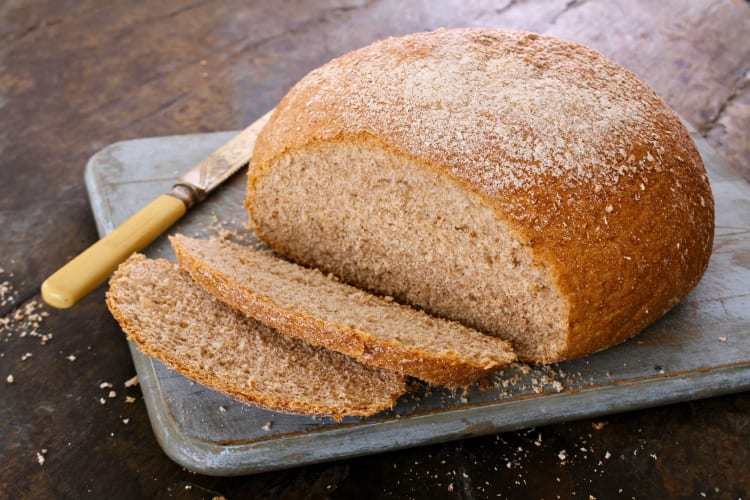
9. Multigrain Bread
By now, you’ve likely realized that the healthiest bread is made with wholegrains rather than refined flour, making multigrain bread a great choice if you're searching for healthy bread options.
The term “multigrain” bread can be deceiving, because the bread could still contain ingredients with lower nutritional value, since the idea of multigrain is a mixture of various types of grains. Either way, multigrain is more nutritious than white and is one of the healthiest sandwich breads if you're looking to make your lunch a little more nutritious.
Look out for multigrain bread labeled “100% wholegrain” or “wholewheat” for the healthiest option. This bread may even have added sugar if purchasing it in the supermarket, so checking the nutritional labels before you add multigrain bread to your cart is important.
Multigrain Bread Product Pick: Sara Lee Delightful Healthy Multi-Grain Bread
Sara Lee Delightful Healthy Multi-Grain Bread Nutritional Overview (per 22-gram slice):
- Calories: 45
- Total Fat: 0.5 grams
- Saturated Fat: 0 grams
- Sodium: 95 milligrams
- Total Carbs: 9 grams
- Fiber: 2 grams
- Total Sugar: <1 gram
- Added Sugar: <1 gram
- Protein: 3 grams

What Is the Healthiest Bread To Eat?
The definition of the healthiest bread to eat is different depending on what your health goals are. Are you more concerned with overall calories or carbs? Or do your health goals include adding more fiber to your diet? Bread can be a legitimate part of a healthy diet as long as you know how to pick the healthiest breads to eat.
In general, the healthiest breads are those made with wholegrains. Because many of us are used to white bread, it can be challenging to make the switch. However, the process of making white bread removes much of the natural fiber and nutrients found in whole grains.
Even when white bread has been re-fortified with nutrients, it still lacks the full fiber benefits of wholegrain bread, meaning it's worth the effort to switch out at least some of the white bread in your diet with wholegrain.
Generally, the healthiest bread provides at least 3 grams of fiber per slice, minimal added sugar and moderate sodium. Homemade bread lets you control ingredients and sodium, and many store-bought wholegrain loaves also meet these criteria. Conveniently, you don’t need fancy gadgets or a large kitchen to make your own bread.
Try checking out cooking classes near you, where you can learn about bread-making from a professional baker. If you can’t find a class in your area, there are lots of healthy online cooking classes, including online bread-making classes, that will give you step-by-step instructions on how to prepare delicious and nutritious breads and other healthy dishes at home.
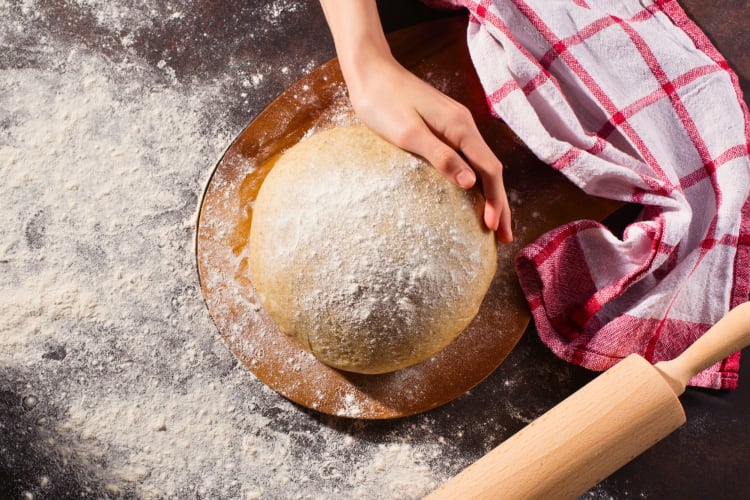
If bread is your comfort food, there is good news: bread can still be part of a healthy diet when you know how to pick the healthiest slice. Choosing the healthiest bread means opting for wholegrains and avoiding processed ingredients. And as always, portion control is a key ingredient to any healthy diet, so even when opting for the healthiest bread, enjoy it in moderation.
For even more ways to explore your favorite foods, check out other experiences happening on Cozymeal.
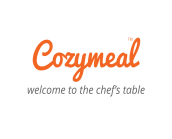


FOOD FOR THOUGHT?
Join the conversation.